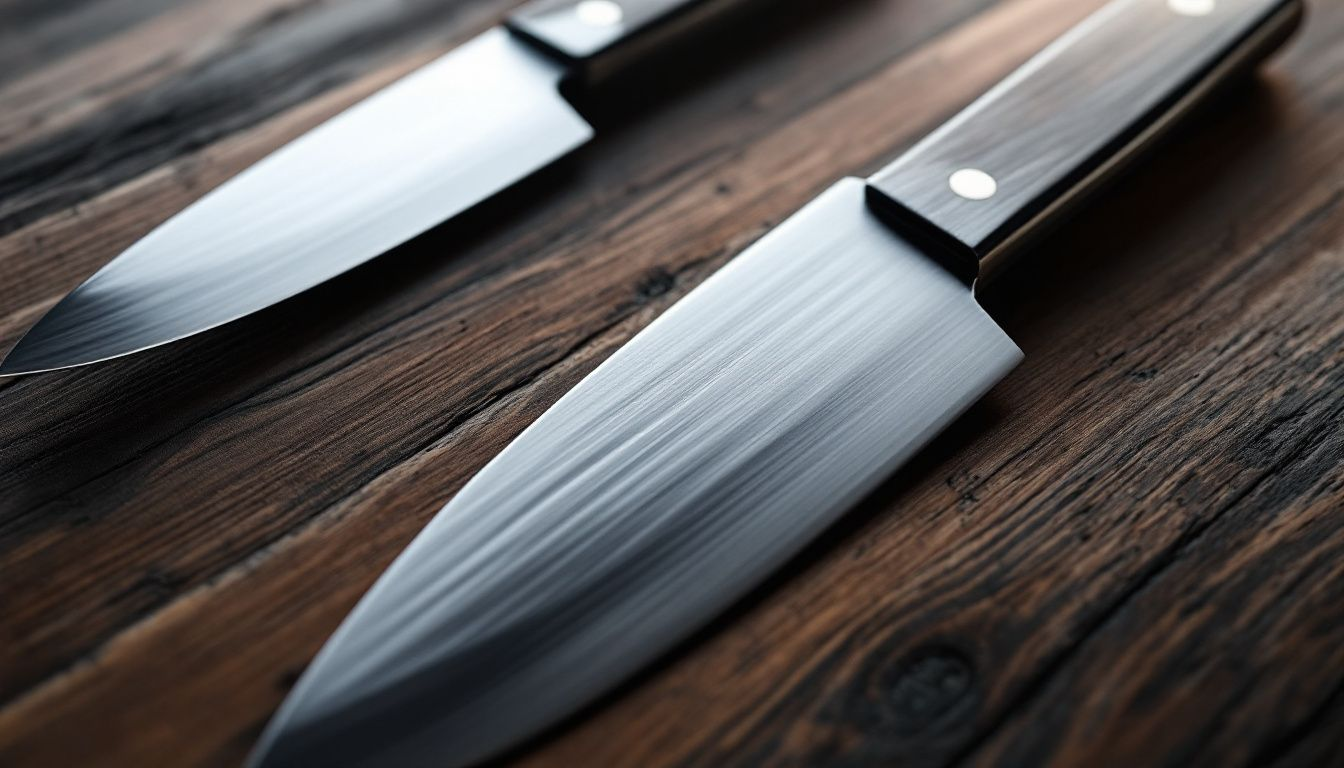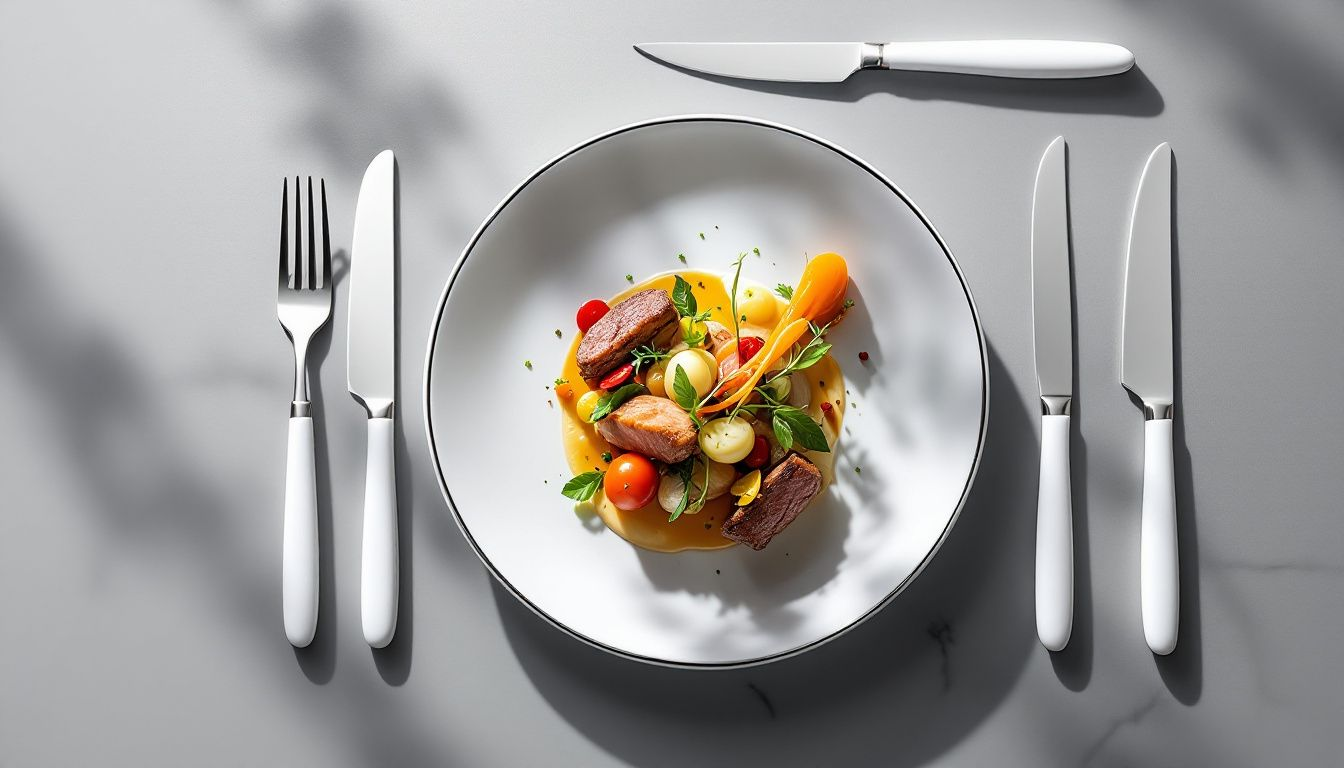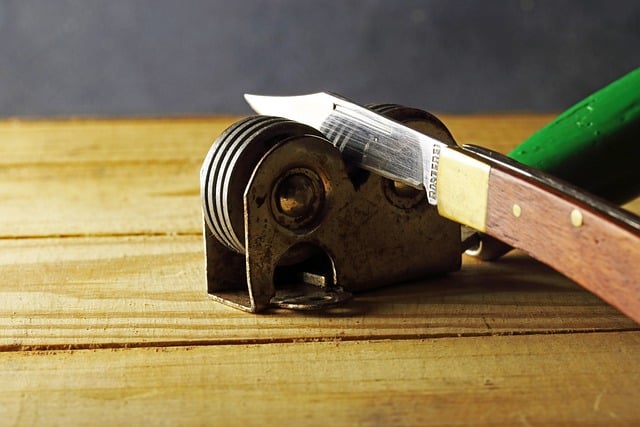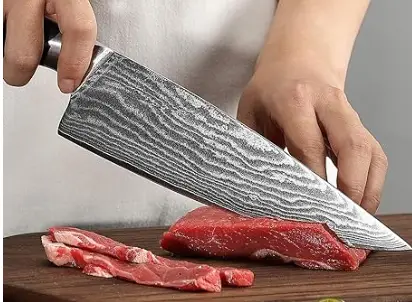Learn All About White Steel
White steel is a high-carbon steel known for its fine grain and sharpness. It’s favored by chefs and artisans for its superb edge retention. This article explores white steel’s properties, refining processes, and uses in knives and tools.
Key Takeaways
- White steel is a high-carbon steel known for its fine grain structure, hardness, and exceptional edge retention, making it ideal for high-quality knives and tools.
- The performance of white steel is enhanced through refining processes like heat treatment and the addition of alloying elements such as vanadium and chromium.
- White steel’s versatility extends beyond knives, with applications in decorative iron work and structural steel for commercial buildings, showcasing its strength and adaptability.
Understanding White Steel: Uses and Benefits for Knives and Tools

White steel, renowned for its fine grain structure, is cherished by chefs and artisans for its ability to achieve exceptionally sharp edges. This high-carbon steel variant stands out for its remarkable hardness and superior edge retention, making it an ideal choice for high-quality knives and precision tools. The process of refining white steel often incorporates elements like vanadium and chromium, which enhance its wear resistance and edge retention significantly.
White steel’s allure extends beyond its performance to the meticulous craftsmanship involved in its creation. Expert forging and heat treatment techniques enhance the steel’s inherent properties, resulting in blades that hold a sharp edge and exhibit impressive durability. This combination of natural and refined qualities makes white steel a preferred material for those who demand the best from their tools.
For professional chefs and craftsmen alike, white steel provides unmatched performance and reliability. Its quick and efficient honing ability ensures a razor-sharp edge with minimal effort, keeping tools ready for any task.
Introduction
White steel’s significance in knife and tool manufacturing cannot be overstated. This remarkable material is prized for its unique properties, which translate into superior performance in various applications. Its fine grain structure and high-carbon content allow for the creation of blades that are exceptionally sharp and durable, making it a favorite among professionals and enthusiasts alike.
White steel’s potential is unlocked through expert forging and heat treatment, crucial processes that enhance its performance to meet high user standards. For instance, in traditional Japanese cuisine, the precision and sharpness of white steel knives are indispensable, highlighting the importance of meticulous craftsmanship in achieving the best results.
Beyond its use in knives, white steel finds applications in various settings, from multistory commercial buildings to intricate ornamental projects. Its versatility and reliability make it a valuable material for a wide range of projects, demonstrating its strength and adaptability in different environments.
A deeper look into the specifics of white steel, including its types, refining processes, and applications, reveals why it remains a top choice in professional and personal settings.
What is White Steel?
White steel, a type of high-carbon steel, is known for its fine grain structure and exceptional ability to achieve sharp edges. This makes it particularly favored by chefs and artisans who require precision in their tools. The composition of white steel typically includes iron and carbon, with the carbon content playing a significant role in its hardness and sharpness.
Incorporating elements like vanadium and chromium during refining enhances white steel’s wear resistance and edge retention, creating a durable blade that withstands daily use while maintaining sharpness. This refining process is crucial for optimizing performance and meeting high standards for knives and tools.
One of the standout features of white steel is its hardness. This property allows it to hold a sharp edge longer than many other types of steel, making it an excellent choice for applications that require precision and durability.
This hardness, however, makes white steel more challenging to work with, necessitating skilled craftsmanship to fully realize its potential. Exploring the different types of white steel and their properties reveals how this material can be tailored to meet various needs and preferences.
Types of White Steel: #1 vs #2
White steel is classified into different types, with White Steel #1 and White Steel #2 being the most prominent. These variants are distinguished by their carbon content and specific properties, making them suitable for different applications.
Advantages of White Steel in Knives

Highly regarded in the knife-making community, white steel’s high carbon content contributes to its remarkable sharpness. Chefs and artisans value its ability to achieve and maintain a fine edge quickly, making it suitable for precision tasks like slicing fish or fine cuts of meat, especially when they require more carbon.
One of the standout advantages of white steel is its ease of sharpening. Unlike some other high-carbon steels, white steel can be honed quickly and efficiently, allowing users to maintain a razor-sharp edge with minimal effort. This is a significant benefit for professional chefs who need their knives to be in top condition at all times. The simplicity of white steel also means that it is forgiving, allowing for quick touch-ups without the need for specialized equipment or extensive skill.
The edge retention properties of white steel are another major advantage. While it may not hold an edge as long as blue steel, white steel still offers very good edge retention, making it a reliable choice for those who value sharpness and performance. Further refining processes, including heat treatment and adding elements like vanadium and chromium, enhance white steel’s properties, ensuring the blade remains sharp and resistant to rust and environmental degradation.
Ultimately, the combination of sharpness, ease of maintenance, and edge retention makes white steel a preferred material for high-quality knives. Whether used in a professional kitchen or for everyday cooking, white steel knives deliver a performance that is hard to beat, providing users with the precision and reliability they need.
Refining White Steel for Enhanced Performance
The performance of white steel can be significantly enhanced through various refining techniques. Heat treatment is one of the most critical processes in refining white steel, as it helps to improve its toughness and corrosion resistance. This process involves heating the steel to a specific temperature and then cooling it in a controlled manner, which helps to enhance its hardness and durability.
Alloying elements such as vanadium and chromium are also added during the refining process to further improve the steel’s properties. These elements contribute to better wear resistance and edge retention, making the steel more suitable for demanding applications.
Precise manipulation of the steel’s fine grain structure during forging is another essential aspect of refining, ensuring the final product meets high standards for quality knives and tools.
Controlled cooling after heat treatment plays a vital role in achieving the desired hardness and toughness in white steel. This step helps to lock in the improved properties of the steel, resulting in a blade that is not only sharp and durable but also resistant to rust and other forms of environmental degradation.
Through these refining techniques, further refining white steel can be tailored to deliver enhanced performance, making it a top choice for those who demand the best from their tools. Additionally, white’s steel is known for its durability and strength.
Comparing White Steel to Blue Steel
White steel and blue steel are both popular types of high-carbon steels, each with its unique properties and advantages. Blue steel, for instance, contains added tungsten and chromium, which enhance its hardness and toughness, allowing it to maintain a sharp edge longer than white steel. This makes blue steel a preferred choice for tasks that require a combination of strength and durability.
Super blue high-carbon steel, a variant of blue steel, incorporates vanadium for additional wear resistance, further enhancing its edge life. This makes it particularly suitable for heavy-duty applications where the blade is subjected to continuous use and wear. The balance between hardness and toughness in blue steel allows it to offer better edge retention compared to white steel, making it a reliable choice for professionals who need their tools to perform consistently over time.
Though white steel may not hold an edge as long as blue steel, it excels in achieving a sharper edge with ease, making it ideal for precision tasks where blade sharpness is paramount.
The choice between white steel and blue steel ultimately depends on the specific needs and preferences of the user, with each type offering distinct advantages that make them suitable for different applications.
Applications of White Steel Beyond Knives

White steel’s versatility extends beyond knives, finding applications in various fields that showcase its strength and durability. In ornamental iron projects, white steel is used to create custom gates, railings, and decorative structures that require intricate designs and robust construction. Its fine grain structure allows for detailed work, making it a preferred material for artisans and craftsmen involved in decorative metalwork.
In the realm of structural steel, white steel plays a significant role in the construction of multistory commercial buildings and large-scale projects. Its strength and reliability make it an ideal choice for these applications, where the integrity of the material is crucial for the overall stability and safety of the structure. The use of white steel in commercial buildings demonstrates its capability to withstand the demands of modern construction while maintaining its superior properties.
Public art installations, such as sculptures and large-scale artworks, also frequently incorporate white steel due to its durability and ability to hold an exceedingly fine edge. These installations often require materials that can endure outdoor conditions while allowing for intricate and detailed designs. White steel’s combination of toughness and fine grain structure makes it an excellent choice for such projects, highlighting its versatility and adaptability in various creative and industrial applications.
Caring for White Steel Knives
White steel knives, prized for their edge retention and sharpness, require diligent maintenance to prevent rusting due to lower corrosion resistance. Regular cleaning and drying are essential. After each use, wash the knife with mild detergent and dry it immediately with a soft cloth to prevent water spots and rust.
Proper storage also plays a crucial role in maintaining the quality of white steel knives. Storing the knives in a dry place, preferably in a knife block or on a magnetic strip, helps protect the blade from moisture and potential damage. Using a sheath can also provide additional protection, especially when transporting the knives. It’s essential to avoid prolonged exposure to acidic foods, which can accelerate rusting and corrode the blade.
Sharpening techniques are equally vital in preserving the sharpness and functionality of white steel knives. Regular honing with a sharpening steel can help maintain the edge, while periodic sharpening with a whetstone ensures the blade remains razor-sharp. Applying the correct angle and pressure during sharpening is essential for achieving the best results and extending the knife’s lifespan.
With proper care and maintenance, white steel knives can continue to deliver exceptional performance for years to come.
Summary
In summary, white steel stands out as a premier material for high-quality knives and tools due to its fine grain structure, high carbon content, and exceptional sharpness. The refining processes, including heat treatment and the addition of alloying elements, significantly enhance its performance, ensuring that it meets the high standards required by professionals and enthusiasts alike. Whether it’s the superior edge retention of White Steel #1 or the balanced properties of White Steel #2, each variant offers unique advantages that cater to different needs and preferences.
The comparison between white steel and blue steel highlights the distinct benefits of each type, with white steel excelling in sharpness and ease of maintenance, while blue steel offers enhanced edge retention and toughness. This versatility extends beyond knives, with white steel being utilized in ornamental iron projects, structural steel applications, and public art installations. Its combination of strength, durability, and fine grain structure makes it a valuable material in various fields.
Ultimately, the choice of white steel knives and tools comes down to the specific requirements of the user. By understanding the properties, refining processes, and maintenance techniques, users can make informed decisions that ensure they get the most out of their white steel products. Embracing the unique qualities of white steel, one can truly appreciate the craftsmanship and performance it brings to the table, making it a worthy investment for both professional and personal use.
- 【Exclusive Built-in Sharpener】Kitchen knife set with sharpener is amazing. The self-sharpening block keeps the knives razor sharp effectively. It saves you from having to honing blades on a sharpening steel.
- 【Premium Knife Set】Made of forged, high-carbon one-piece German stainless steel, this cutlery knife block set is tarnish-resistant and rust-resistant. The knife set is well-made with a nice appearance. They are sharp, durable, and have good weight and balance, providing effortless cutting. Perfect for both professional chefs and beginner.
- 【Easy to Clean Up】: The kitchen knife set with block is easy and fast to clean. Hand-wash for best results. The blades are stainless and rust-free after going through washing.
- 【Easy to Store】: All knives are stored safely in the knife block with built-in sharpener for space efficient storage. The block is easy to clean and maintain. It is durable and doesn't take up too much space on the counter. Made of natural rubberwood,this wooden kitchen knife block is strong and sturdy to hold heavy knife sets and is finished with a beautiful veneer that’s naturally resistant to grime and easy to wipe clean
- 【Best Sharp Knife Set】Optimized weight and good balance make this kitchen knife set fit nicely in the palm of hand. Exclusive taper grind edge technology provides optimum sharpness for precise cutting and is easy to re-sharpen. The knives are sturdy and can handle heavy chopping. The knives set stays sharp even after extended use.
- Multipurpose Knife Set: This kitchen knives set includes 8" Chef Knife, 8" Slicing Knife, 7" Santoku Knife, 8" Serrated Bread Knife, 5" Utility Knife, 3.5" Paring Knife, Kitchen Shears and 6 pcs Blade Guards
- Anti-rust coating: The healthy anti-rust coating protects the knife from oxidation and dishwasher safe, while the non-stick coating ensures the blades stay clean all day long
- Easy to carry: Each knife comes with a blade guard for safe, compact storage in your kitchen cupboard. These knives are also easy to carry when camping or storing in your RV
- Perfect Holiday Gift: Ideal for kitchen enthusiasts or new cooks, this knife set meets all cooking needs. It makes an excellent holiday gift for family, friends, lover and colleague
- Lifetime Warranty: Every knife set is backed by rigorous quality inspection, we provide a lifetime warranty for every customer, ensuring superior customer service and peace of mind with every purchase
- ULTRA-SHARP BLADES: Superior professional-level sharpness that ensures precision cutting.
- THE LAST KNIFE YOU’LL EVER NEED TO BUY: German Engineered Knife Informed by over 100 Years of Mastery. HENCKELS knives are built to last.
- EFFORTLESS CUTTING: Enjoy easy cutting with minimal effort with this lightweight, easy-to-use knife.
- SET INCLUDES: 3-inch paring knife, 5-inch serrated utility knife, 7-inch santoku knife hollow edge, 8-inch chef's knife, 8-inch bread knife, 4.5-inch steak knife set of 6, professional honing steel, kitchen shears, and hardwood knife block
- QUICK CLEAN UP: No-fuss cleanup, in the dishwasher or by hand. Stain and rust-free blades.
Frequently Asked Questions
What makes white steel different from other types of steel?
White steel stands out due to its high carbon content, fine grain structure, and the addition of elements such as vanadium and chromium, which improve wear resistance and edge retention. This combination makes it particularly well-suited for crafting high-quality knives and tools.
How do White Steel #1 and White Steel #2 differ?
White Steel #1 features a higher carbon content, which makes it harder and superior in edge retention but more brittle, whereas White Steel #2 offers a balanced combination of edge retention, ease of sharpening, and toughness, making it better suited for everyday tasks.
Why is white steel preferred for knives used in traditional Japanese cuisine?
White steel is preferred for knives in traditional Japanese cuisine because it provides exceptional sharpness and edge retention, crucial for the precise cutting techniques used in preparing dishes such as sashimi and sushi. This quality enhances the overall culinary experience.
What are the main advantages of white steel knives?
White steel knives offer exceptional sharpness, ease of sharpening, and excellent edge retention, making them well-suited for precision tasks with minimal upkeep. Their performance characteristics make them a valuable tool in any kitchen.
How should I care for my white steel knives to prevent rust and maintain performance?
To prevent rust and maintain the performance of your white steel knives, wash and dry them immediately after use, store them in a dry place, and utilize a sheath for protection. Regular honing and sharpening with a whetstone will also enhance their longevity.






